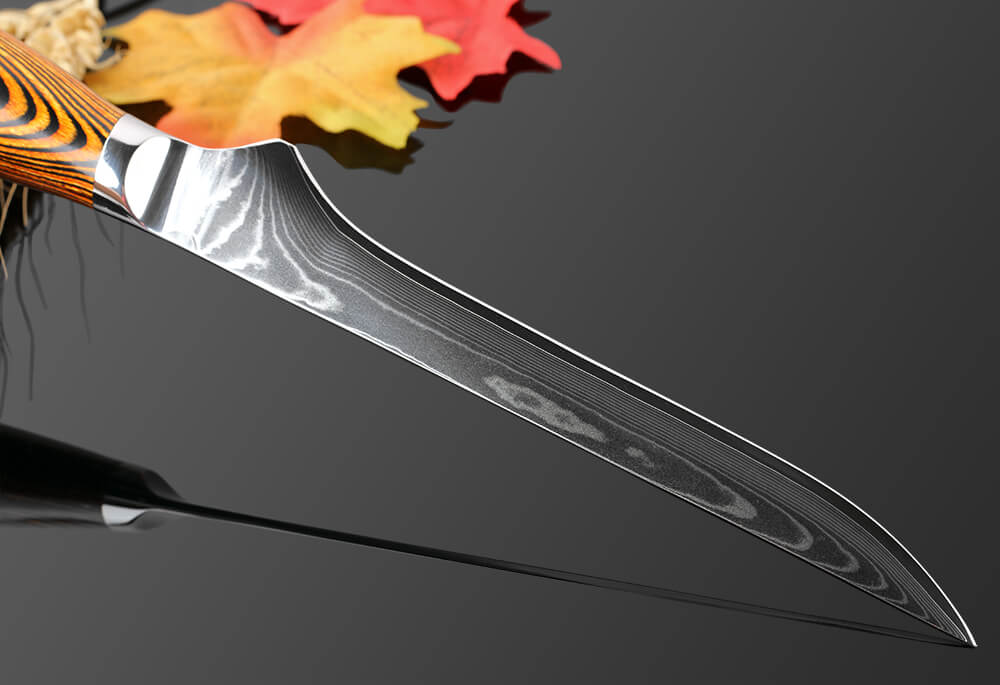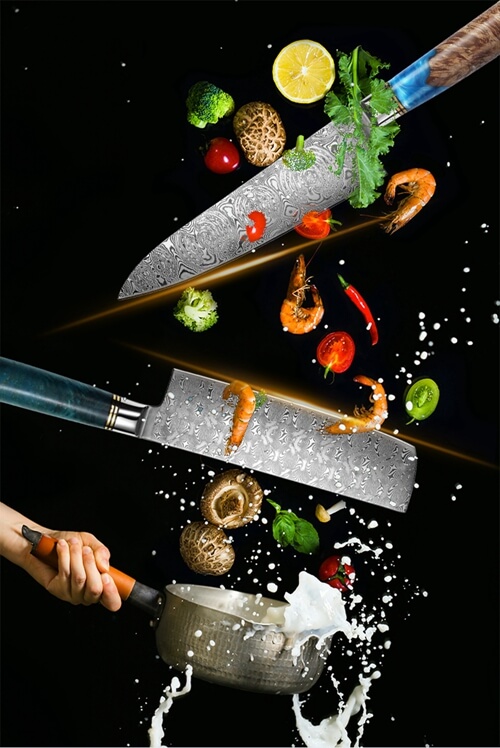Relationship Between Sharpness And Hardness
In Japanese, sharpness is written as 切れ味, inside it, 味 is meaning of “taste”. Therefore, sharpness is literally a “taste” that cannot be expressed numerically, and this sharpness cannot be achieved by using only materials and quenching. If the material for cutting tools is properly hardened, the hardness will be adjusted according to the characteristics of the material, but this high hardness does not mean that the performance of the cutting tool is high.
Please note that some manufacturers may be biased toward this hardness notation. On this page, let’s check the relationship between the material, quenching, structure, etc., and unravel the relationship between sharpness and hardness.
Sharpness Performance Does Not Equal Hardness Only
The elements that create the sharpness of a kitchen knife are the performance “hardness” as a material, the structure “grinding structure” of the blade, and the performance “blade angle” of the cutting edge. Even if the hardness is high, if the blade angle is obtuse, the sharpness is not excellent, and even if the blade angle is sharp, if the hardness is low, the sharpness cannot be kept and the blade edge will curled up immediately.
Also, if the hardness is high and the cutting edge is sharp, the sharpness is excellent, but the blade becomes brittle, so the blade is likely to be chipped.
All of our products have hardness set according to a clear standard, but please understand that we do not want to provide customers with a false recognition of hardness and we want to provide a clear “sharpness”.
Hardness And Toughness Coexistence
The higher the hardness of the metal, the higher the brittleness. According to usage of knife and the food material , the kitchen knife manufacturer will choose the best material and hardness of blade to produce kitchen knives.
In particular, the balance between hardness and toughness becomes important depending on the application. For example, service knives and fillet knives used in Europe, which require the blade to be bent along the skin and body to cut, may break in the middle if the blade is hard. However, it is necessary to use a material with reduced hardness for the blade.
In other words, the hardness of the blade is determined by the ingredients and usage, and the performance of kitchen knives cannot be measured by hardness.
Hardness is obtained by quenching. Generally, the material is activated by quenching, and the overall hardness is obtained by scientifically changing the structure inside the structure. However, making this material stiff is, in other words, making it brittle. In other words, it does not mean that “hardness” is equal to “strength increases”.
After “quenching” the kitchen knife, a process called “annealing” is performance to return the material whose hardness has increased too much to a hardness that is easy to use. A kitchen knife without this process will have a higher hardness than the standard, but it will be a very dangerous tool when used, such as the blade breaking in half.
High Hardness Leads To Durability
The advantage of high hardness is that it has improved wear resistance and can do cutting for a long time. Since the kitchen knife always keeps in contact with foodstuffs and cutting boards, the high hardness makes it difficult for the blade to curl, and it can be said that the sharpness lasts a long time.
We also have kitchen knives that use powdered high-speed steel for the blade as a material that boasts high hardness (about HRC 62 degrees). This powdered high-speed steel is a material used for drills, tools, dies, etc. for cutting metal, and is known as a material that is extremely hard and resistant to wear.
However, no matter how good a knife is, the cutting edge is always worn and must be re-sharpened. A kitchen knife that boasts too high hardness cannot be re-sharpened with a whetstone, and has the disadvantage of being difficult to handle.
Based on the above, it can be said that an HRC hardness of about 52 to 62 is appropriate for cutting ingredients with a kitchen knife, and if it is higher than this hardness, you must be careful about breaking the blade as it is. It will be. In particular, when finishing with a main blade, the cutting edge becomes relatively thin, so if a lateral force is applied, the risk of blade chipping or blade breakage becomes extremely high.



